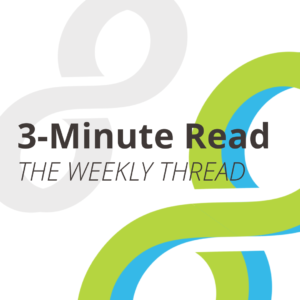Proposal Powerhouse: The Rise of Proposal Development Positions in Academia
Sept. 5 , 2023 — The past decade has seen a proliferation of large-scale government funding opportunities from countries and regions throughout the world. From consortia-enabled resource centers to long-term, multi-party collaborative technology development efforts, these complex programs require significant investments and planning to develop a viable application. As Chief Brody said when he first laid eyes on the shark in Jaws, “You’re gonna need a bigger boat.”
, 2023 — The past decade has seen a proliferation of large-scale government funding opportunities from countries and regions throughout the world. From consortia-enabled resource centers to long-term, multi-party collaborative technology development efforts, these complex programs require significant investments and planning to develop a viable application. As Chief Brody said when he first laid eyes on the shark in Jaws, “You’re gonna need a bigger boat.”
While faculty principal investigators (PIs) routinely develop research funding proposals, large-scale opportunities are complex and require additional support. To land the big fish, we’ve seen the growing importance of a dedicated university position for proposal and research development, which often includes talent and economic development aspects—a capable leader who owns the process and serves as the glue holding all the elements together. They assemble diverse teams, cultivate faculty resources and expertise, and build relationships with old and new partners. In this dedicated role, they also leverage existing industry research partnerships to secure large awards.
Evolving roles
The federal research enterprise has profoundly shifted to favor more cross-sector research collaborations. Cross-agency initiatives are also on the rise, as is an increased emphasis on use-inspired research. These proposals are complex and have many forms and certifications, so a dedicated team skilled in completing these elements is a major plus.
As institutions search for leaders to pursue these funding opportunities, they look for individuals with a diverse skill set—respect and expertise as a researcher in the trenches (with a strong history of proposal development), faculty leadership experience, and relationships with leaders in other sectors (government and industry are foundational).
Importantly, the role must integrate expertise in research from basic to market-ready, requiring interaction across the institution. On many campuses, the role has evolved to encompass research, innovation, and even economic development functions, calling for powerful collaboration skills to forge relationships with both external partners and peers across their institution. In large research universities, the role is highly visible and resides organizationally within research and innovation.
Expert insights
As the vice president for knowledge enterprise at The Ohio State University, Dorota Grejner-Brzezinska is well-versed in proposal and research development. Because research and talent development are inherently intertwined with faculty engagement, she leads a dedicated team that not only supports the proposal writing process, but also develops strategies for research growth, building capacity across the research talent pool. She brings years of experience to her role as a scientist, research leader, and professor. She says a thorough understanding of the federal research market is foundational to developing and winning large, interdisciplinary proposals.
“My research and a bit of national exposure, such as leading the Engineering Research Visioning Alliance (ERVA) or being on the National Science Board (and previously the President’s Council of Advisors on Science and Technology), gives me a good view of how we can position ourselves,” she said. “Because let’s face it, this operation requires not only internal but a lot of external connections.” She emphasized the importance of connections with federal agencies “so that we don’t only react, but are also at the table to understand and potentially even help define future research directions.”
Grejner-Brzezinska said talent development is equally important as proposal development; her teams offer specialized programming to help faculty develop research leadership skills and build teams. Nearly everyone on her team had previous roles in proposal development, government engagement, or research. Many also have doctorates in STEM fields.
Vying for large-scale federal funding is a long game and goes hand in hand with faculty development; it takes several years to work with faculty to define key research directions and build relationships with potential external and internal partners—work that should be well underway before any large research solicitation is even offered. “For us, it’s the strategic positioning for success—understanding the federal market and projecting where it’s going in terms of research topics and, oftentimes, developing relationships with research sponsors,” she said.
In addition to human resources, you need realistic financial resources. She highlighted the importance of “buying faculty time” or relieving faculty of some or all of their teaching duties, so they have the bandwidth to focus on research. “This is our job: to bring the faculty forward, to ideate with them, to create the strategy and roadmap the pockets of expertise, and determine what connective tissue and investment are needed to strengthen an area in such a way that it brings distinction to our university and brings us to national prominence.”
“Nothing comes without investment,” she adds. OSU seeds promising research areas in part to attract external sponsored research funding in areas with significant societal impact. “We run the President’s Research Excellence program for projects in strategic growth areas for OSU that require cross-disciplinary teams and have the potential to address some of society’s most vexing problems,” she says. The program positions OSU for much more extensive, longer-term funding down the road.
Why it matters
New roles dedicated to interdisciplinary, large-scale proposal development can strengthen the overall research enterprise, resulting in more impactful research and driving innovation. These professionals are dedicated to leveraging connections to create interdisciplinary teams and win funding from complex, multifaceted opportunities. By recognizing their significance, organizations can harness their potential to foster scientific discovery and cultivate fruitful collaborations.
We want to hear from you. Does your organization have a specific role for large-scale proposal development? Let us know on our LinkedIn profile.


